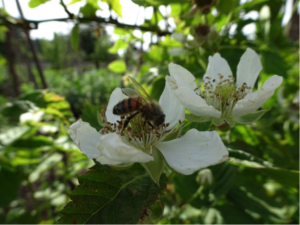Insect Pollinators and Policy
“Bees and other wild pollinators are fascinating, beautiful, and vital to our food production. They have pollinated our crops for millennia; now it’s time for us to return the favour.” – Dave Goulson, DEFRA
by Erin Cullen
Pollination is the process of pollen being transferred to the female reproductive organs of a plant and fertilisation taking place. Pollinators (which include honeybees) are vital to the process of pollination in flowering plants. Therefore pollinators provide vital ecosystem services which include food production as well as being important for biodiversity and conservation. With the need for food production to increase, now is an important time for pollinator security. However, their numbers are in decline. This piece will consider the legislation in place to protect pollinators both at a UK and international level, and examine the evidence collected by scientists to determine its efficacy. Although government commitment to biodiversity is strong in the UK, patchy legislation means that this commitment may not translate into protection for pollinators.








